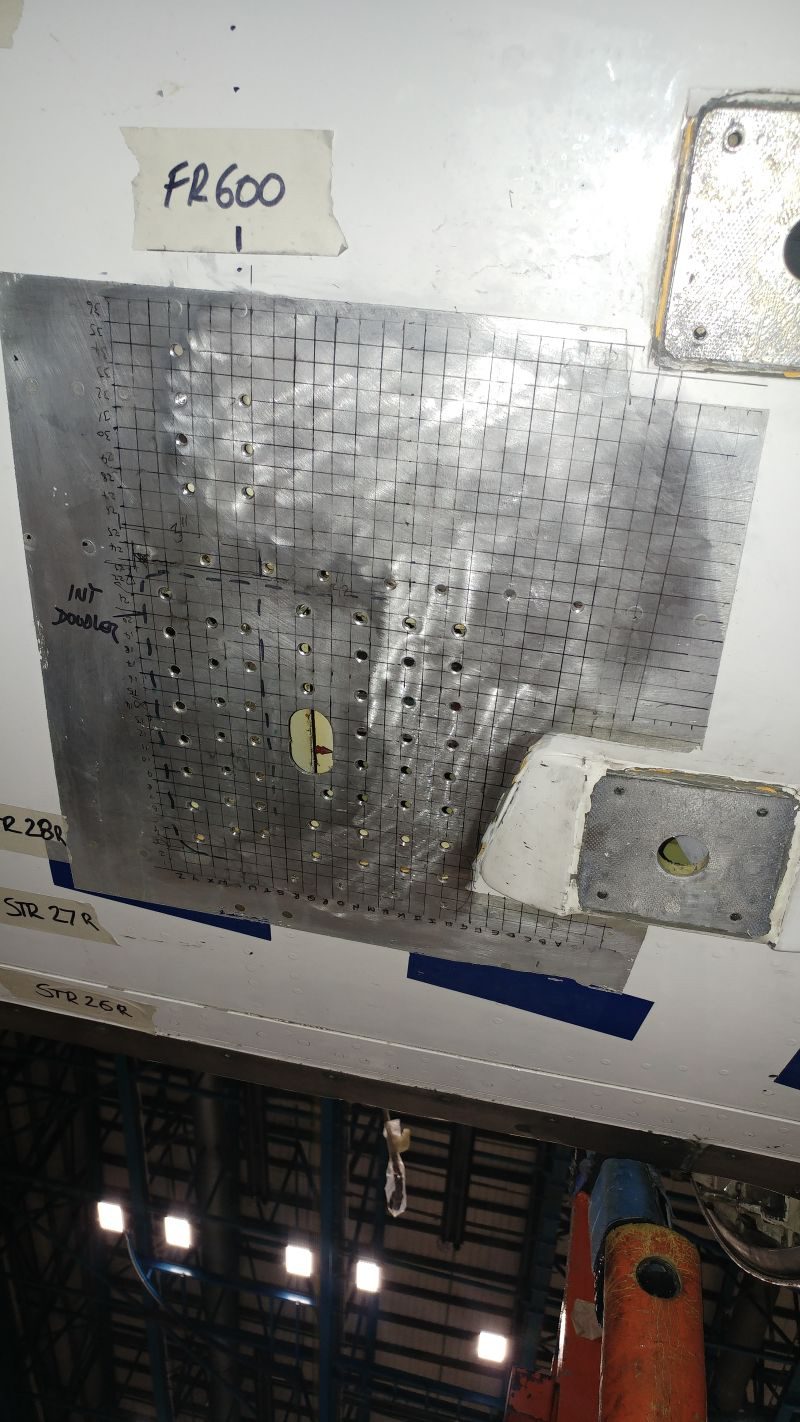On a transition, existing damage to the aircraft will be a common encounter as damage will occur throughout an aircraft’s life.
If we consider fuselage damage, what we need to know and consider is important and will commonly include, but not limited to the following:
Where is the area that the damage is – how we can pinpoint it; to usually illustrate FRame’s and STRinger’s will be used. The Frame is a longitudinal measurement and the stringer a circumferential one.
The damage type itself should be included– this might be a dent, scratch, gouge, lightning strike or crack for example.
The damage dimensions should be recorded; for example, a dent would have a length, width and depth measurement.
Action taken – there will be a record of the assessment for damage and that assessment will include actions taken. This might be a repair, certain detailed inspections or non-destructive tests (NDT)
Based on the location of the damage the thickness of skin can also be determined along with the type of skin.
Another consideration is when the damage occurred and the noted reference date / revisions for documentation used; a repair that is not currently acceptable, may have been in an older revision of a manual.
For most repairs we will refer to a structural manual such as the structural repair manual (SRM) which covers multiple smaller or common repairs on an aircraft.
When damage exceeds the limits noted in a structural manual then repair and evaluation instructions may come from various sources such as a Part 21 authorised organisation or the OEM (original equipment manufacturer).
The damage we see and the recorded details for the repair should be accurate, and dimensions/location recorded are considerations during a review.
This is a brief overview of only several points as structures reviews are a complex topic; they are also one of the most important due to their potential impact on a transition regarding time taken to address queries and or rework repairs.
Stay up-to-date with all our aviation news and information:
- Click Here to sign up to the IALTA newsletter.
- Follow us on LinkedIn:
- Learn more at www.ialta.aero/courses
#aircraftmaintenance #aircraftleasing #aircraftengineer #aircraftmechanic #aircraftsales #aircraftengineering
